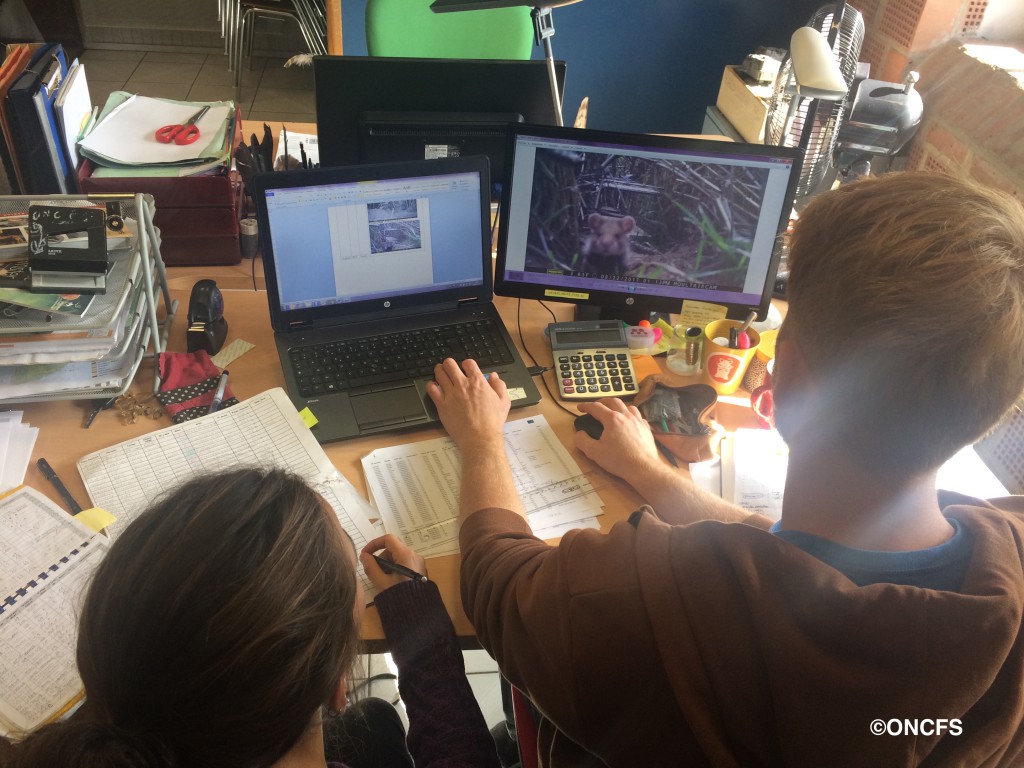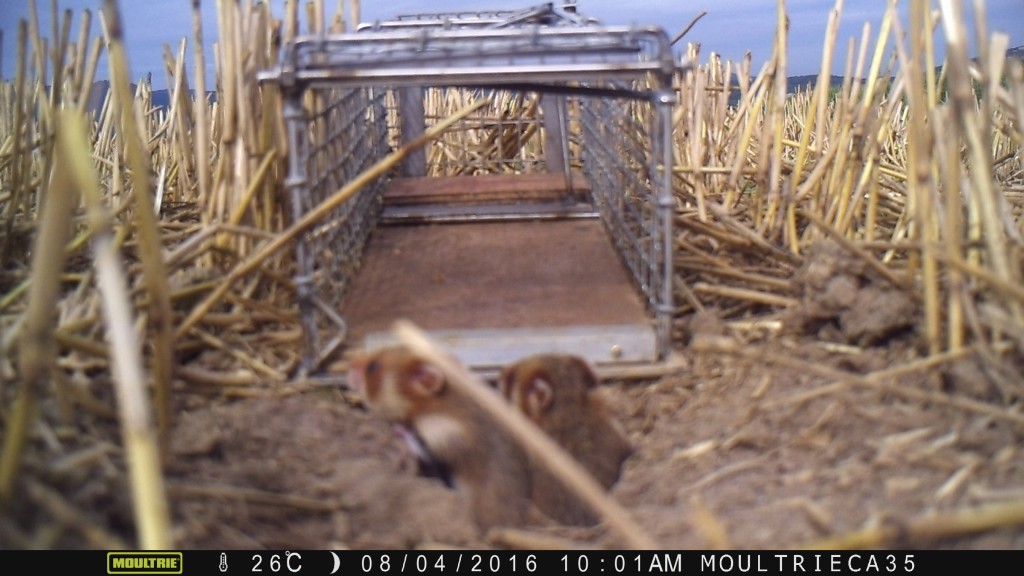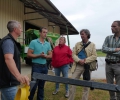Mrs HEX401 Hamster’s high season
13 novembre 2017The European Hamster’s period of activity is gradually coming to a close… Between two rounds of telemetry and camera traps, the ONCFS (French National Hunting and Wildlife Agency) onsite team is starting to analyse all the data it has collected.
The female HEX401 is shown here. She was captured for the first time in April, when she was equipped with a transmitter to follow her movements and especially to identify the burrows she was using. Overall, she occupied five different burrows on two plots of land. The ONCFS planted a camera trap each time to establish the age and sex of the animals photographed.
From its observations obtained using camera traps, telemetry data and capture, the ONCFS is able to estimate the number of litters per female. It was observed that this female gave birth to three different litters, each in a different burrow. Based on the data found in printed literature (gestation period of 19 days and about 20 days before the young leave the burrow), it is almost certain that this female moved to another burrow about one week after the babies from her previous litter emerged and a few days prior to the birth of her next litter.
The ONCFS was able to identify and weigh 6 of these young hamsters when they were captured this summer: 4 were from the second litter and 2 from the third litter.
Now the same life reconstruction must be undertaken for each of the 21 females observed onsite during the 2017 season, in order to estimate the rate of reproduction for the population being studied.
This will definitely keep the team at the ONCFS very busy during the European Hamster’s period of hibernation!





